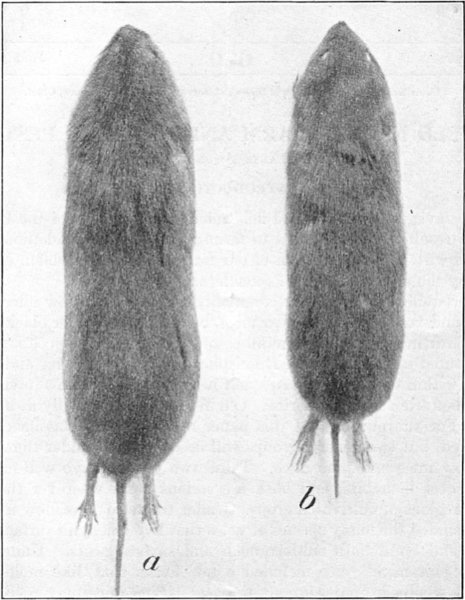UNITED STATES DEPARTMENT OF AGRICULTURE
FARMERS' BULLETIN
Washington, D. C.670June 3, 1915.
Contribution from the Bureau of Biological Survey, Henry W. Henshaw,Chief.
FIELD MICE AS FARM AND ORCHARD PESTS.
By D. E. Lantz, Assistant Biologist.
Note.—This bulletin describes the habits, geographicdistribution, and methods of destroying meadow mice and pine mice,and discusses the value of protecting their natural enemies amongmammals, birds, and reptiles. It is for general distribution.
INTRODUCTION.
The ravages of short-tailed field mice in many parts of the UnitedStates result in serious losses to farmers, orchardists, and thoseconcerned with the conservation of our forests, and the problem ofcontrolling the animals is one of considerable importance.
Short-tailed field mice are commonly known as meadow mice, pine mice,and voles; locally as bear mice, buck-tailed mice, or black mice.The term includes a large number of closely related species widelydistributed in the Northern Hemisphere. Over 50 species and races occurwithin the United States and nearly 40 other forms have been describedfrom North America. Old World forms are fully as numerous. For thepurposes of this paper no attempt at classification is required, buttwo general groups will be considered under the names meadow mice andpine mice. These two groups have well-marked differences in habits,and both are serious pests wherever they inhabit regions of cultivatedcrops. Under the term "meadow mice"[1] are included the many species ofvoles that live chiefly in surface runways and build both subterraneanand surface nests. Under the term "pine mice"[2] are included a fewforms that, like moles, live almost wholly in underground burrows. Pinemice may readily be distinguished from meadow mice by their shorter andsmoother fur, their red-brown color, and their molelike habits. (Seefig. 1.)
[1] Genus Microtus.
[2] Genus Pitymys.

Fig. 1.—Field mice: a, Meadow mouse; b,pine mouse.
MEADOW MICE.
Meadow mice inhabit practically the whole of the NorthernHemisphere—America, north of the Tropics; all of Europe, exceptIreland;[Pg 2] and Asia, except the southern part. In North America thereare few wide areas except arid deserts free from meadow mice, and inmost of the United States they have at times been numerous and harmful.The animals are very prolific, breeding several times a season andproducing litters of from 6 to 10. Under favoring circumstances, notwell understood, they sometimes produce abnormally and become a menaceto all growing crops. Plagues of meadow mice have often been mentionedin the history of the Old World, and even within th